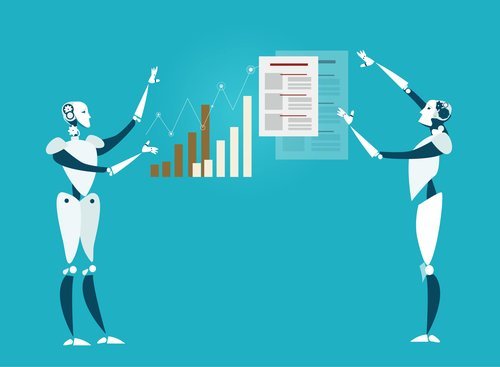
This article was initially published in June 2019 and was updated in April 2020.
Surviving in today’s competitive world requires businesses to efficiently use available resources and take appropriate strategic decisions. In order to prevent wastage of resources, many organisations are turning towards automation solutions.
As with any major change, performance metrics are necessary to make a convincing case for investment in automation.
In order to help you have a better view of understanding robotic process automation’s ROI, we designed an infographic that contains the shortened version of the 10 performance metrics discussed in this article. You can find it at the end of the article.
— — — — — — — — — — — — — — — — — — — — — — — — — — — — —
Robotic process automation is growing more and more popular, and you’ve most likely already heard about its benefits: improved accuracy via elimination of manual errors, creation of quasi error-free databases, more satisfied employees, streamlined workflows, etc.
However, merely listing these gains is not very likely to convince your stakeholders that RPA is indeed a competitive advantage for your company.
RPA performance metrics are necessary to make a convincing case for automating business processes because it provides a crystal clear quantitative demonstration of its financial, business, and operational impact on the company.
Measuring RPA in a restricted sense amounts to measuring the financial return on investment (ROI) of RPA in your company. By tracking the RPA ROI, performance metrics also allow more realistic planning of the future of your automation journey towards enterprise-wide use. However, there are also metrics to assess qualitative benefits, e.g., employees’ job satisfaction.
![]()
Example of tracking RPA ROI https://www.slideshare.net/ARJUNMEDA1/how-to-design-rpa-performance-metrics
The idea behind robotic process automation performance metrics is to compare “before” and “after” for automated processes. Generally speaking, “before” refers to a way to measure the manual effort multiplied by the work cost (i.e., the salary of the employees performing the tasks), while “after” is the sum between the cost of the RPA tool and that of the people who handle RPA maintenance.
Of course, you aim to show that automation results in cost reduction, where ‘cost’ covers both financial and human-centred costs.
How to measure RPA performance metrics and RPA ROI
In what follows we will provide short descriptions of some performance metrics that can help you evaluate objectively the consequences of RPA deployment in your organisation. Moreover, those outcomes can be used as arguments to persuade decision makers that RPA is precisely what your company needs.
1. Improved accuracy
Automation allows you to eliminate the errors that are unavoidable in the case of manual performance, due to boredom, fatigue, lack of concentration, etc. The proof for this claim comes from comparing the amount of work that needs to be done to compensate for errors before and after RPA implementation. The interpretative principle is that lesser need to redo the work due to errors means more efficient processing, in less time and for less money.
2. Need for intermissions
Another feature that leads to robots’ increased productivity is their capacity for quasi-continuous work, with infrequent upgrade interruptions. Hence, measuring RPA can be done by comparison of how much downtime human employees need to complete processes, with robots’ downtime.